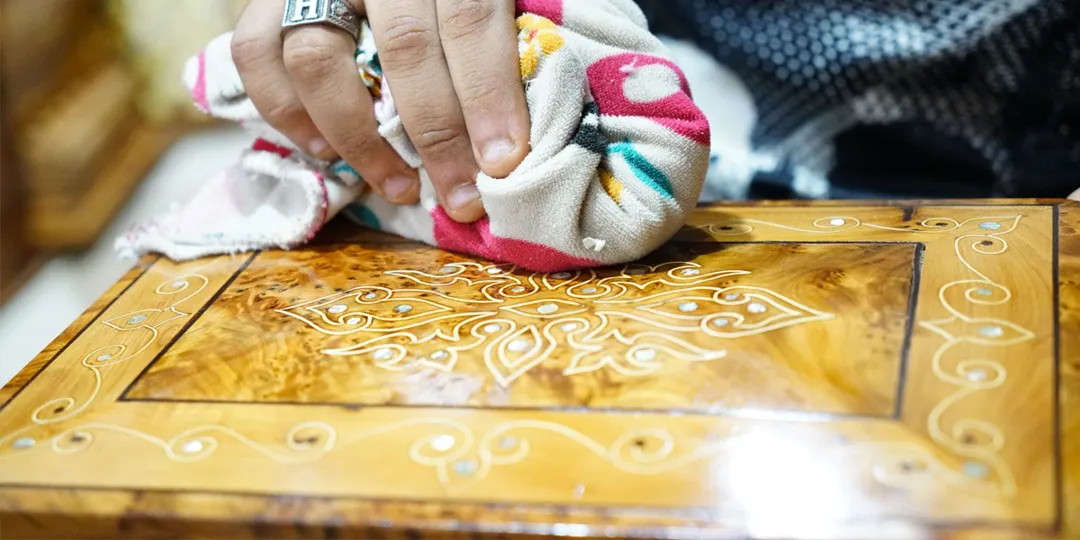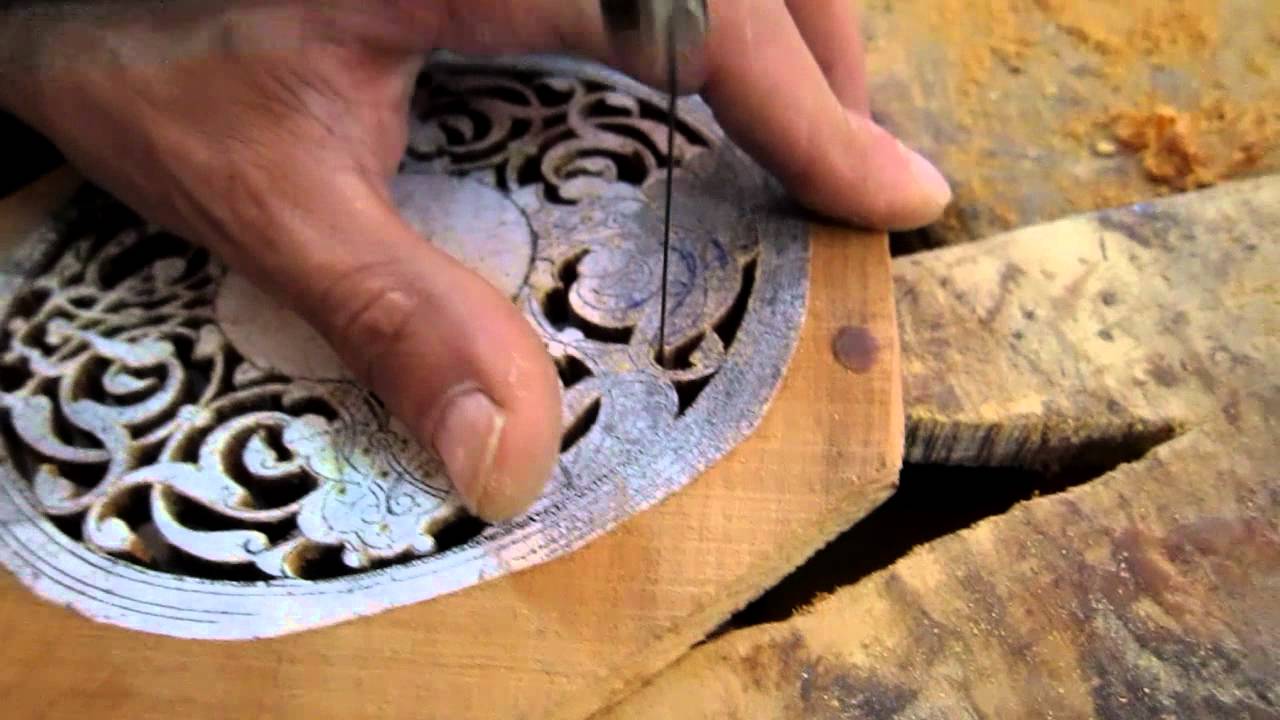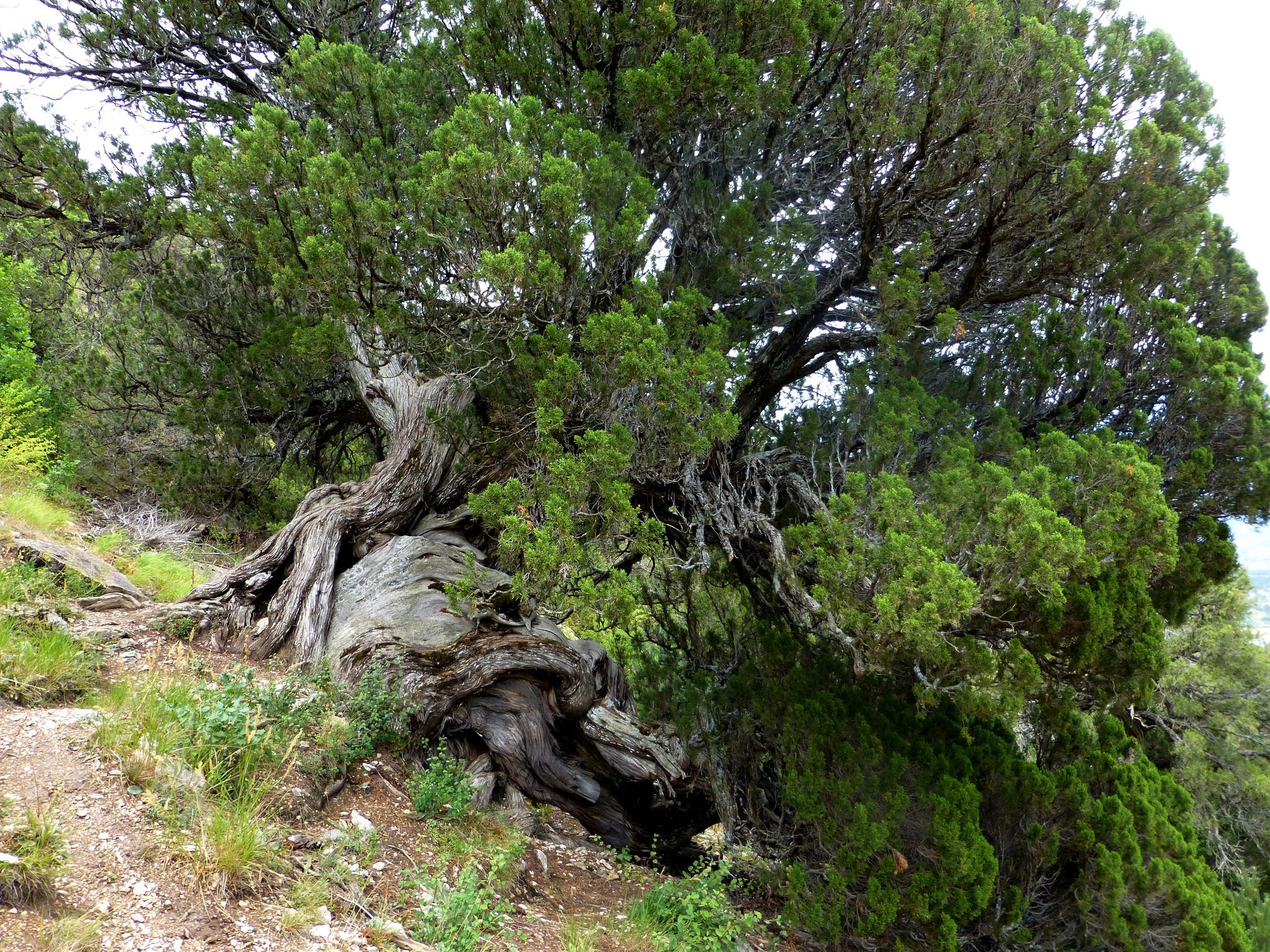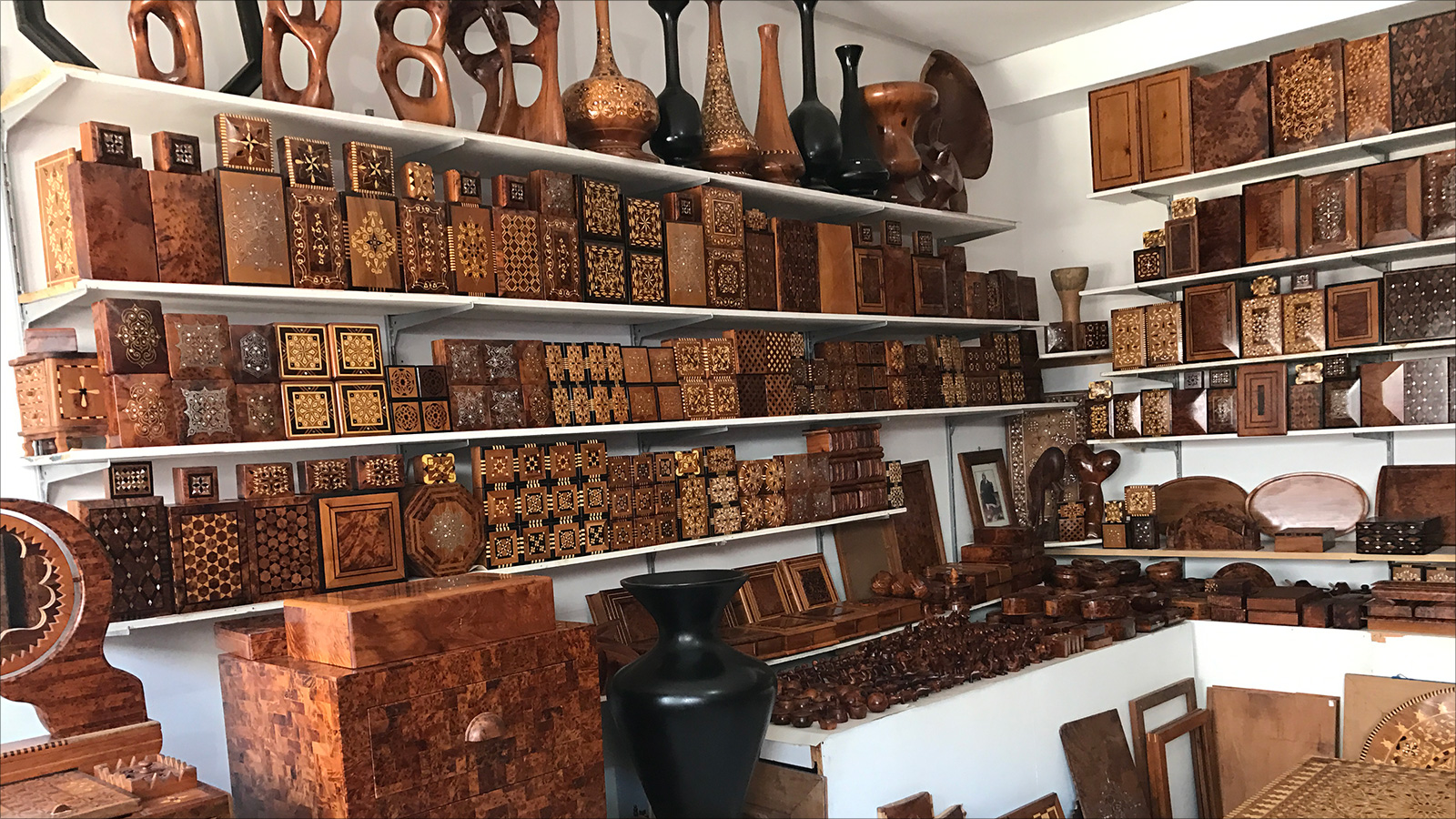Essaouira is well known for its artisanal thuja wood marquetry. The city cultivates this knowledge that dates to the 19th century in Morocco.
At that time, sultans called on artisans to make decorative objects, furniture, and musical instruments.
Essaouira is well known for its artisanal thuja wood marquetry. The city cultivates this knowledge that dates to the 19th century in Morocco.
At that time, sultans called on artisans to make decorative objects, furniture, and musical instruments.

Marquetry
Marquetry is the art of gluing a wood mosaic on a carpentry background. The mosaic can be precious woods, shells, or silver metal filaments.
Artisans use floral ornaments or geometric shapes to decorate items they design.
Thuja tree
This string and fragrant wood grow in Morocco, in the Atlas Mountains.
Thuja is a tree of the conifer-cypress family. Thuja tree has thick branches that make it unique among all other types of exotic wood.
You should also know that the thuja is a protected tree, and Morocco holds 80% of the world reserve.
The rarity of the thuja makes its exploitation controlled. Now, the government regulates the use of thuja.
The government had taken several actions to protect the tree. Reforestation and the preservation of the forest ecosystem are a high priority.
Preserving the ecosystem is the only way to keep this wood, support artisans, and maintain the craft industry.
Essaouira is a beautiful port city located on the edge of the Atlantic Ocean.
The city is well known for its artisanal marquetry in thuja wood root. In Essaouira, you can find thuja wood in all its forms: trees, forests, tables, sculptures, etc.
Artisans use thuja wood to design decorative objects as well as utility items.
If you walk through the old medina of Essaouira, you will notice the high number of thuja objects for sale. And this goes from crafted lamps to salad spoons.
Thuja shop
The thuja craft industry dates back to the 19th century. Sultans of Morocco ordered decorative objects, furniture, and musical instruments of thuja wood.
The artisans of Essaouira helped to perpetuate and modernize this know-how. Now, the reputation of this art is well established in Morocco and abroad.
Thuja wood is renowned for its pleasant smell and softness. But only a knowledgeable artist can work this rare wood.
The artisans from Essaouira excel in working with this precious material. They have preserved this know-how of woodworking from generation to generation.
Over the years, the artisans of Essaouira went from simple carpentry to much more meticulous work. Their interaction with Italian, French, and Andalusian masters improved their techniques.
The craftsmen of the Essaouira region manage to make the thuja wood smoother and shinier. Their secret is fine polishing followed by handmade varnishing.
The thuja marquetry trade dates back to the beginning of the 19th century. Sultans, wealthy Moroccan families and Europeans are loyal customers to these talented artisans.
Royal table of thuja
Initially, carpenters used thuja to build houses and elements of daily life. Now, thuja is part of the heritage of Essaouira. If you walk in the medina, you will see the number of wooden objects. The items range from the chiseled lampshade to the salad spoon.
Vase of thuja
The high quality of the thuja wood, and the high skill of artisans, make thuja products unique.
Tray of thuja with floral filament
All items made from thuja wood are luxury products. You can see car accessories, trophies, luxury cigar boxes, branded pens, etc.
Box made of thuja
Before the development of marquetry in Essaouira, carpenters used thuja wood for the construction of houses. Today, thuja wood is the flagship wood of marquetry.
Thuja tree has small roots, which allows small workshops to work the wood. For this same reason, artisans handle this wood more than carpenters.
From the thuja tree, we use two kinds of wood:
Everything is a matter of patience and respect. When extracting the root, we must be very gentle. The risk of damaging the heartwood requires us not to use any machine.
What makes thuja a unique wood is the combination of three qualities: resistance, color, and fragrance. No other kind of wood would offer such a combination.
When working with thuja wood, there are three methods:
© 2022 Marrakech Tricks. All rights reserved | Design by Marrakech Web Design








